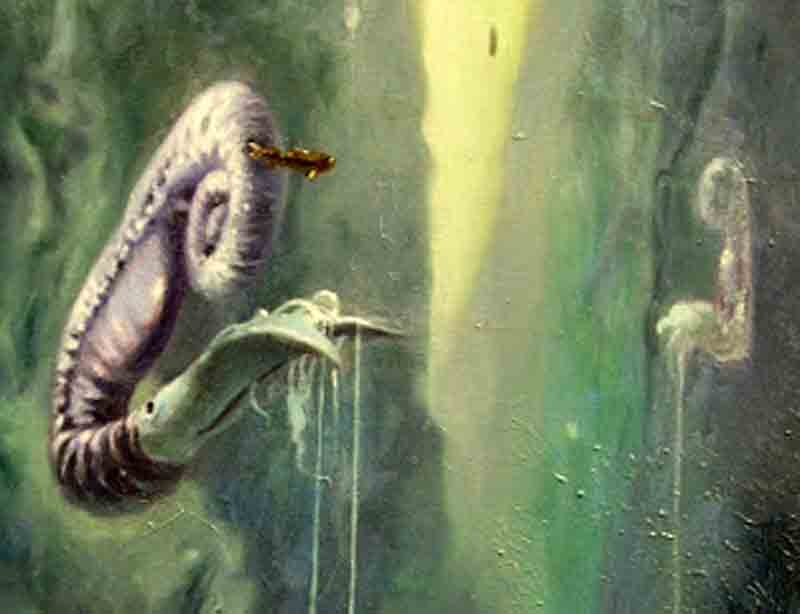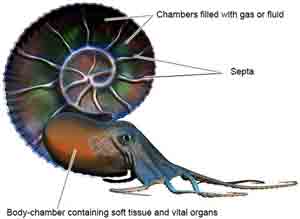Ammonite Fossil Heteromorphic Seashell mm 80 x 50 x 32 gr 155 Ancyloceras audouli (Syn. Audioliceras) Extinct Prehistoric Molluscs Cephalopod Mesozoic Cretaceous Collecting Paleontology Museum.
Remarkable fossil sample of Heteromorphic Ammonite (with unrolled shell) from the Lower Cretaceous, a representative collectible find of good quality, with evident and appreciable details of the unwrapped coils and the dense, well-preserved ornamental thin ribs.
Partially restored phragmocone. Only a piece, as in photos.
Ancyloceras is an extinct genus of Heteromorphic Ammonites of the Ancyloceratidae family that spread throughout the globe during the Lower Cretaceous period, from the Lower Barremian to the extinction of the genus during the Lower Aptian (129-125 million years ago).
This animal was one of the best-known
unrolled ammonites, and gives its name to an entire suborder. They are known for their heteromorphic shape (heteromorphic = different shape), that is, with a
partially unrolled shell and the
opening facing the spiral part. The shell had a bizarre "saxophone" shape, with the
U-shaped room, followed by a long straight structure (stick) which ended in a spiral and
partially unrolled fragmocone.

The section of the round was oval or circular, and the ornamentation consisted of a series of
rolled up and thin ribs, very dense; in the advanced part of the shell, near the room of habitation, some coasts were particularly large and gnarled, equipped with spiny tubercles. On the external surface of the room, the ribs were more spaced, while the suture had a narrow and very deep lobe.
Ancyloceras ammonites have a shell that reaches about 10 centimeters long and about 7 centimeters wide.
Most ammonites, on the other hand, are
homomorphic, since they maintain the same shape during growth, while the ammonites of this genus have uncoiled shells, which would have precluded fast swimming. Despite this, it has always been thought that these were a genre of active hunting ammonites.
Ancyloceras was typical of rather deep marine environments, where the water pressure was considerable. The climate of the environment in which he lived was probably subtropical, and the waters were warm and rather oxygenated and rich in plankton. The study of the paleoenvironment and its planktonic productivity characteristics has made it possible to hypothesize that this complex structure of the shell could not only be an obstacle to an active life, but also an evolutionary adaptation suited to a plankton-based trophism.
Fossils of various species of Ancyloceras are found in abundance in the marine layers of the Cretaceous period (under the Barremian stage, 117-113 million years) in Europe and Morocco.
Known species:
A. audouli Astier, 1851
A. fallauxi Uhlig, 1883
A. Casey cloaks, 1960
A. matheronianum d'Orbigny, 1842
A. vandenheckii Astier, 1851
Syn.
Audioliceras.
Other Ammonites uncoiled, with look vaguely similar (
Macroscaphites, Scaphites) may not have been close relatives of Ancyloceras.
The
Ammonites are an extinct group of Cephalopods, which appeared in the Lower Devonian about 400 million years ago and extinguished at the end of the Cretaceous, together with the Dinosaurs (65 million years ago), leaving no known descendants.

Like all cephalopods known this organisms were carnivorous: active predators of marine animals, microphagous (plankton), scavengers, and even cannibals. The shell of ammonites in general has the form of a
spiral wound on a plan (although some species, such
heteromorphy, have a more complex three-dimensional winding) and it is this feature that has given their name. The appearance infact resembles a
coiled horn, like that of a ram (the Egyptian god
Amon was commonly depicted as a man with ram's horns). Pliny the Elder described the fossils of these animals ammonis cornua, "horns of Ammon." Often the name of the species of Ammonites ends with -ceras, from a greek word (κÎρας) whose meaning is, in fact,
"horn" (eg. Pleuroceras etymologically means horn with the coast).
The shell was divided by
septa into several rooms, including the clam occupied only the last. The others were used as
"air chambers" filled with gas and liquid to control the
floating body. The ammonite could well change its depth in a manner similar to the current
Nautilus.
Because of their extraordinary variability and distribution in marine sediments around the world the ammonites are considered fossils for excellence and
guide-fossils of exceptional value, used for dating in stratigraphy of the sedimentary rocks.
The classification of ammonites is made on the basis of morphology and
ornamentation of the shell, and the shape of septa, depending on the
suture line.



